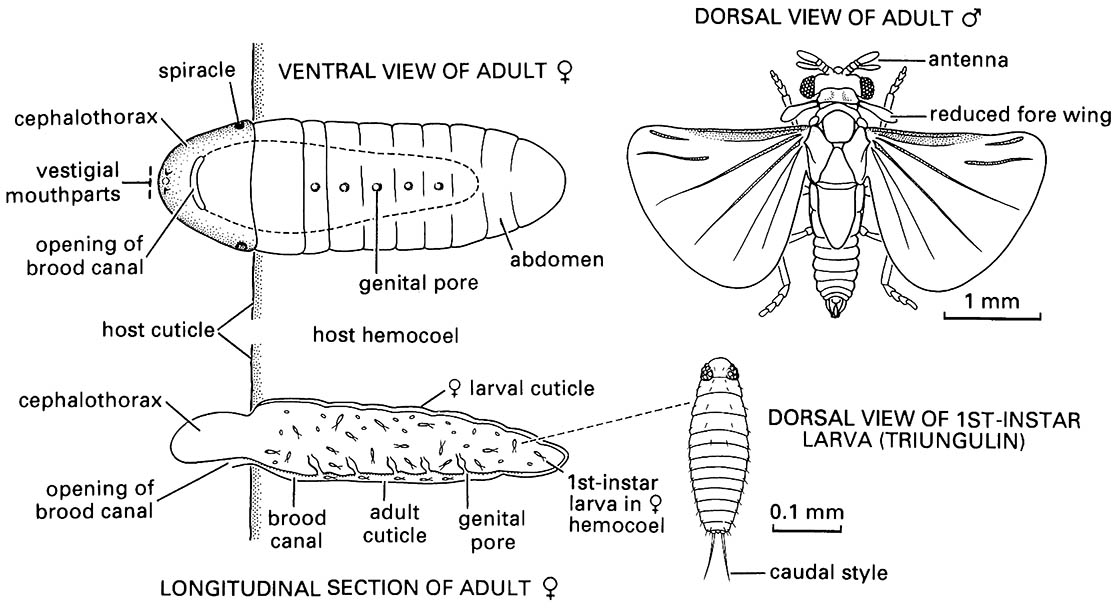Box 13.6. Strepsiptera
The Strepsiptera is an order of 500–550 species of highly modified endoparasites with extreme sexual dimorphism. The male (top right figure, after CSIRO 1970) has a large head and bulging eyes with few large facets, and no ocelli. Antennae of the male are flabellate or branched, with four to seven segments. The pro- and mesothorax are small; the fore wings stubby and with- out veins, and the hind wings broad, fan-shaped, and with few radiating veins. The legs lack trochanters and often also claws. An elongate metanotum overlies the anterior part of the tapering abdomen. The female is either coccoid-like or larviform, wingless, and usually retained in a pharate (cloaked) state, protruding from the host (as illustrated in ventral view and longitudinal section in the left figures, after Askew 1971). The triungulin (first-instar larva; bottom right figure) has three pairs of thoracic legs, but lacks antennae and mandibles; subsequent instars are maggot-like, lacking mouthparts or appendages. The pupa is exarate and adecticous, within a puparium formed from the final larval instar.
Strepsipterans are endoparasites of other insects, most commonly of Hemiptera and Hymenoptera. The host insects suffer morphological and physiological abnormalities and, although not killed prematurely, they rarely can reproduce. Strepsipteran eggs hatch within the mother, and active triungulins emerge via a brood canal (as shown here on the bottom left) and seek out a host, usually in its immature stage. In Stylopidae that parasitize hymenopterans, triungulins leave their host whilst on flowers, and from here seek a suitable adult bee or wasp to gain a ride to the nest, where they enter a host egg or larva.
Entry to the host is via the enzymatically softened cuticle, followed by an immediate molt to a maggot-like instar that develops as an endoparasite. The pupa protrudes from the host’s body; the male emerges by pushing off a cephalothoracic cap, but the female remains within the cuticle. The virgin female releases pheromones to lure free-flying males, one of which copulates, inseminating through the brood canal on the female cephalothorax.
Eight families of Strepsiptera are recognized. Phylogenetic relationships of this order are controversial and are considered in section 7.4.2 and depicted in Fig. 7.2.


Broken lines indicate uncertain relationships. Thysanura sensu lato refers to Thysanura in the broad sense. (Data from several sources)



